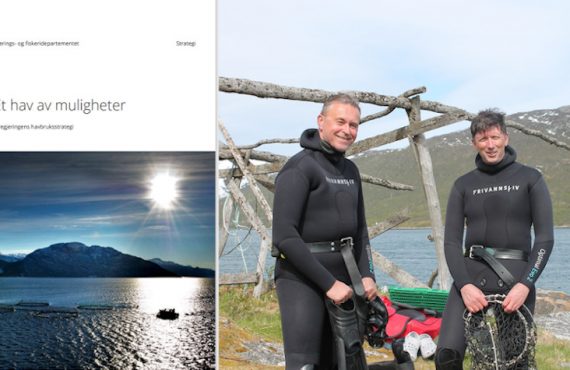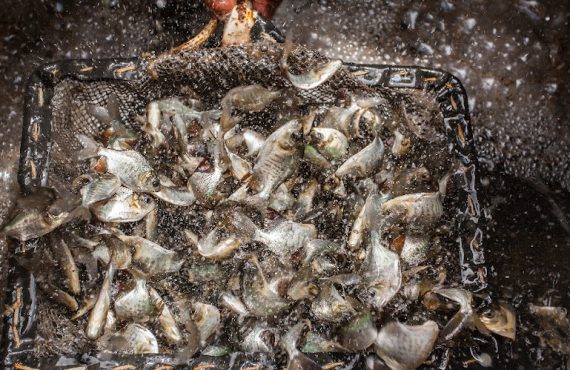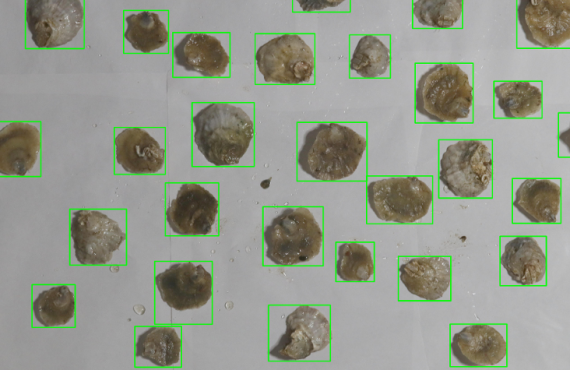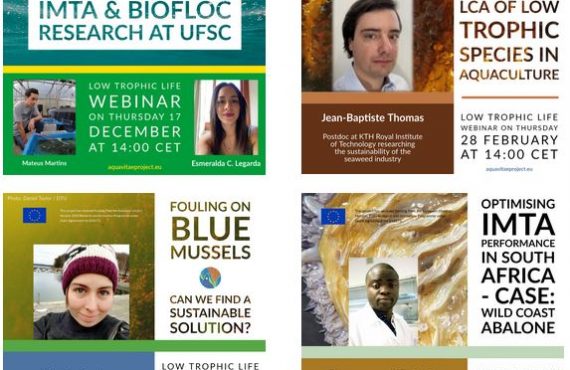Left to right: cultivation of oysters on floating pillows at the Primar Aquacultura farm in Brazil and Márcia Kafensztok managing oyster seeds. Photos: Primar Aquacultura Márcia Kafensztok, who researches on the possibilities of Brazilian native oyster production and IMTA systems in Brazil, has been awarded first place in the Women of
Norwegian aquaculture strategy to the left. Minister Odd Emil Ingebrigtsen and AquaVitae coordinator Phil James about to go sea urchin diving in the Arctic ocean in June 2020. Photos: Norwegian Ministery of Trade, Industry and Fisheries. The AquaVitae project is highlighted as a successful example of international cooperation in aquaculture research. In
Tambaqui fingerlings. Jefferson Christoffoletti, EMBRAPA. Arapaima gigas, known locally as pirarucu, is the largest scaled freshwater species in the world and a strong candidate for aquaculture in Brazil. Alongside this giant of the Brazilian rivers, tambaqui (Colossoma macropomum) is the second freshwater species cultivated in the country,
Oyster clasification by image analysis. Photos by Åsa Strand, IVL. By Jens Wilhelmsson, engineer at IVL. One of the most valuable bivalve molluscs in Sweden is the flat oyster, Ostrea edulis. However, domestic production of oysters fails to meet the demand on the local market at the same
Collage with promotional images. Each month a young researcher in the AquaVitae project gets to show their work on sustainable aquaculture to the public. The recordings of the sessions are available here: Seaweeds as key components in pond IMTA systems; Stefany Almeida Pereira, UNESP Low
Field work by IVL team focused on native oyster production. Photo: Åsa Strand. Seafood is the future. It is nutritious and healthy and an industry that has enormous growth potential. The new initiative Blue Food – Center for future seafood will make Sweden a leading producer of sustainable seafood, through a
A dish with IMTA products: a shrimp hamburger, with Salicornia mayonnaise and an IMTA beer. Photo by Felipe Vieira, of UFSC. All AquaVitae partners in Brazil, the Federal University of Santa Catarina (UFSC), the Federal University of Rio Grande (FURG), the
Screenshot from the AquaVitae project movie. With a focus on sustainability and the possibilities of low-trophic species aquaculture, AquaVitae has released a promotional short film for the project work. The film outlines the role of the Atlantic Ocean as a shared food resource for coastal countries and the need to
Photo collage with SDGs logos and photos of algae (AlgaPlus), abalone (Rhodes Univ.), mussels (CSIC), sea urchins (Nofima), oyster spat (Åsa Strand) and sea cucumber (AWI). A short survey (30 seconds approx..) on the Sustainable Development Goals (SDGs) related to low-trophic aquaculture is available at https://bit.ly/av-survey-sdgs. This anonymous survey will
Habitat surveys with Connemara Shellfish Co-Op at Cill Ciaran Bay Co. Galway, Ireland. Photo by Colin Hannon. Author: Colin Hannon, Leader of the work on Hatchery and Seedling Production in AquaVitae. GMIT – Ireland The Irish West Coast offers wildness, remoteness and clean waters. Conditions that are fit for purpose when we
A team made up by Swedish aquaculture company Bohus havsbruk,the research Institute IVL and the Native Oyster Restoration Alliance (NORA) is looking for companies interested in evaluating a new protocol for pond based production of oyster spat. Culture














